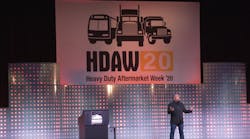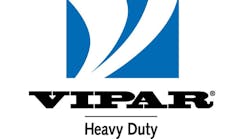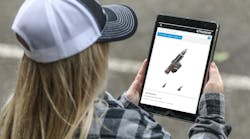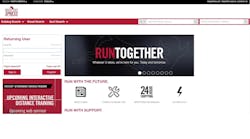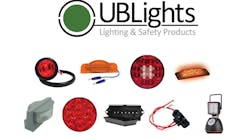It's in the books. Finally.
After numerous delays, the long-awaited rewrite of Federal Motor Vehicle Safety Standard (FMVSS) 108 appeared in the Federal Register on December 4, listed as the National Highway Traffic Safety Administration's (NHTSA) 49 CFR Parts 564 and 571, and starting with page number 68234.
The final rule amends the standard on lamps, reflective devices, and associated equipment by reorganizing the regulatory text so that it provides a more straightforward and logical presentation of the applicable regulatory requirements, which includes the agency's interpretation of the existing requirements. It also greatly reduces the need to consult relevant third-party standards by including applicable requirements directly into the main body of FMVSS 108 rather than incorporating such provisions by reference. This final rule does not impose any new substantive requirements on manufacturers.
Spanning 207 pages, it might seem rather daunting. But it is pure bliss to Brad Van Riper, senior vice president and chief technology officer for Truck-Lite, chairman of the Society of Automotive Engineers (SAE) lighting committee, and past president of the Transportation Safety Equipment Institute (TSEI).
“It's a significant improvement for the industry,” he says. “The benefits of the rewrite are that many of the requirements are in one section, rather than scattered throughout the document. If you need to know about headlights, you can go to the headlights section. If you need to know about stop lamps, go to the stop lamps section. That order in itself is the biggest overall benefit. With a little bit of effort, you can find all of the performance requirements for the different lighting functions without having to scan through the entire document.
“There was an effort to take the referenced SAE standards and, because some of them are so old they're out of print, integrate the verbiage from them into the standard so the people who haven't been in the industry very long have access to the requirements.
“A few of us in the industry have an intimate knowledge of the FMVSS 108 standard because we use it every day. But for an OEM who might want to release a new model truck or trailer, it's a painstaking effort to understand all the requirements because ultimately the OEMs are responsible for certifying that their vehicles comply with the standard based on equipment location and the functions that are required in the standard. If you don't have that intimate knowledge of knowing right where those rogue additions to the standard are, or if you haven't done the effort — like some OEMs have — of electronically linking the functional requirements together, this reorganized standard will be very useful.”
New features are useful
Van Riper says one of the most useful new features is a cross reference that starts on page 128 of the document.
“It is quite accurate and will be quite useful for people looking for certain things in the document,” he says. “It gives you the opportunity to cross reference the current FMVSS 108 or incorporated document citation against the initially proposed re-write against the final rule. So you have some degree of cross reference between all three of the documents.”
In addition, this document amends 49 CFR Part 564, Replaceable Light Source Information, by adding a newly created Appendix C, which relocates figures addressing sealed beam headlamps that currently reside in FMVSS 108 and a relevant SAE standard there.
“We believe few lighting manufacturers still produce sealed beam headlamps, and their diminishing use is unlikely to draw new manufacturers of this type of lamp. Accordingly, we see no drawbacks to consolidating the information regarding sealed beam light sources with other light source information currently located in 49 CFR Part 564,” NHTSA says in the document.
The reaction from various industry associations:
-
Jim Tipka, vice president of engineering for the American Trucking Associations (ATA): “We saw the rule as just being a reorganization of existing information and didn't see how it would have any ill effects on motor carriers or our members. Now it's a longer rule, but it seems to be a better packaging job. In the re-write, they tried to get all the extra references — like SAE diagrams — and incorporate them into the rule. So it, in theory, should be easier to use. That's the intent of the rule. Hopefully, it will work that way.”
-
Jeff Sims, engineering manager for the Truck Trailer Manufacturers Association (TTMA): “It's very well-organized this time. It came out more user friendly. They pulled in a few interpretation letters, which will help. We were already using those interpretation letters, so I don't see any change for us. It might have an impact for a new trailer manufacturer. For someone who wanted to start a new business, it'd be easier for them to read and understand.”
-
Bob Clarke, president of the Truck Manufacturers Association (TMA): “It was not to have been a substantive rule change. With that in mind, we didn't pay a huge amount of attention at the truck OE level. For our friends who supply lights, if there is a slight change in the way the photometric tests need to be run, that would just be taken into account when they do their certification work.”
A pioneering standard
Van Riper says FMVSS 108 dates back to the early 1960s and is one of the first federal standards developed on vehicles and equipment. In developing the standard, NHTSA incorporated requirements from a number of industry consensus standards, in particular SAE standards. Motor vehicle technology was relatively simple compared to today. For example, NHTSA points out that motor-vehicle headlight systems were limited to ones consisting of either two 7" or four 5 ¾" round, sealed-beam units.
Developments during the ensuing years included a number of rectangular, sealed-beam units, replaceable bulb headlamps, and integral beam headlamps, and FMVSS 108 was amended to permit the use of this new technology. Later, the standard was further amended to add requirements for high-mounted stop lamps, side-marker lamps, and side-reflex reflectors to allow for daytime running lamps and to address the conspicuity needs of large vehicles.
However, those amendments were made on an ad hoc basis, which over time resulted in a patchwork organization for FMVSS 108. In addition, when regulated parties had questions regarding how FMVSS 108 should be interpreted — in many instances due to rapid advances in lighting technology not fully anticipated or addressed by the existing regulatory text — they submitted requests for interpretation to the agency on specific issues. Many interpretation letters have been issued dealing with the standard, resulting in a situation where requirements are located directly in its regulatory text and in referenced and sub-referenced SAE standards, and elaborated upon in various agency interpretations.
The result, Van Riper says, was “a very unstructured document” that required a person to either “have a lot of time or a significant amount of expertise to be really able to find all of the individual requirements for the functions that are regulated.”
NHTSA says that many regulated parties complained that they were not fully confident that they could identify all applicable requirements and ensure that they were satisfied. Many parties also pointed out that some of the older versions of SAE standards incorporated by reference into FMVSS 108 were no longer readily available from SAE International.
“It is a re-write that is long overdue,” he says. “The industry has been asking for it for 15 or more years. That said, it was a daunting process that many had started with good intentions, but it's so overwhelming. Finally, TSEI actually re-wrote it for them and submitted it, but they couldn't accept the input from the industry so finally a consultant was commissioned by NHTSA. He went through it and was responsible for much of the re-write.”
In December 2005, there was a supplemental notice of proposed rulemaking indicating what their intentions were, and a proposal was made.
The agency received comments from 27 entities in response: 11 lamp or lamp-component manufacturers, 11 manufacturer or user associations, three vehicle manufacturers, and two test organizations.
Commenters included: TMA, Motorcycle Industry Council (MIC), Koito Manufacturing Co Ltd, TTMA, General Electric Automotive Plastics, General Motors North America, Specialty Equipment Market Association (SEMA), Grote Industries, Innovative Lighting Inc, Calcoast Industrial Testing Laboratory, General Electric Automotive
Lighting, Valeo Sylvania LLC, Guide Corporation, Alliance of Automobile Manufacturers (AAM), 3M Traffic Safety Systems, Valeo Lighting Systems, Association of International Automobile Manufacturers (AIAM), Owner-Operator Independent Drivers Association Inc (OOIDA), Atlas Material Testing Solutions, ATA, Honda Motor Co, Nissan North America Inc, and Bayer Material Science LLC.
A joint response was submitted by Motor and Equipment Manufacturers Association (MEMA), TSEI, and Motor Vehicle Lighting Council (MVLC).
The final rule is effective September 1, with voluntary early compliance permitted immediately. Van Riper says that doesn't have an impact because there are no changes to the law — just restructuring and reorganizing it.
He would, however, have liked more time to pore over the document's 207 pages. Petitions for reconsideration of the final rule had to be received by January 18 — just 46 days after it was published in the Federal Register.
“There was an incredible effort by technical experts in both the truck and trailer industries in reviewing the re-write to assure that there were no unintended circumstances that occurred as a result of the good intentions — things that might have fallen through the cracks,” Van Riper says. “It's just unfortunate that it came during the Christmas holiday and came in such a short period of time.
“We probably had 40 people on a conference call one day, trying to review it, make assignments, and study sections. It's been a really concentrated effort by many businesses that are, on a day-to-day basis, competitors. But we shared the burden of trying to make an assessment.”

